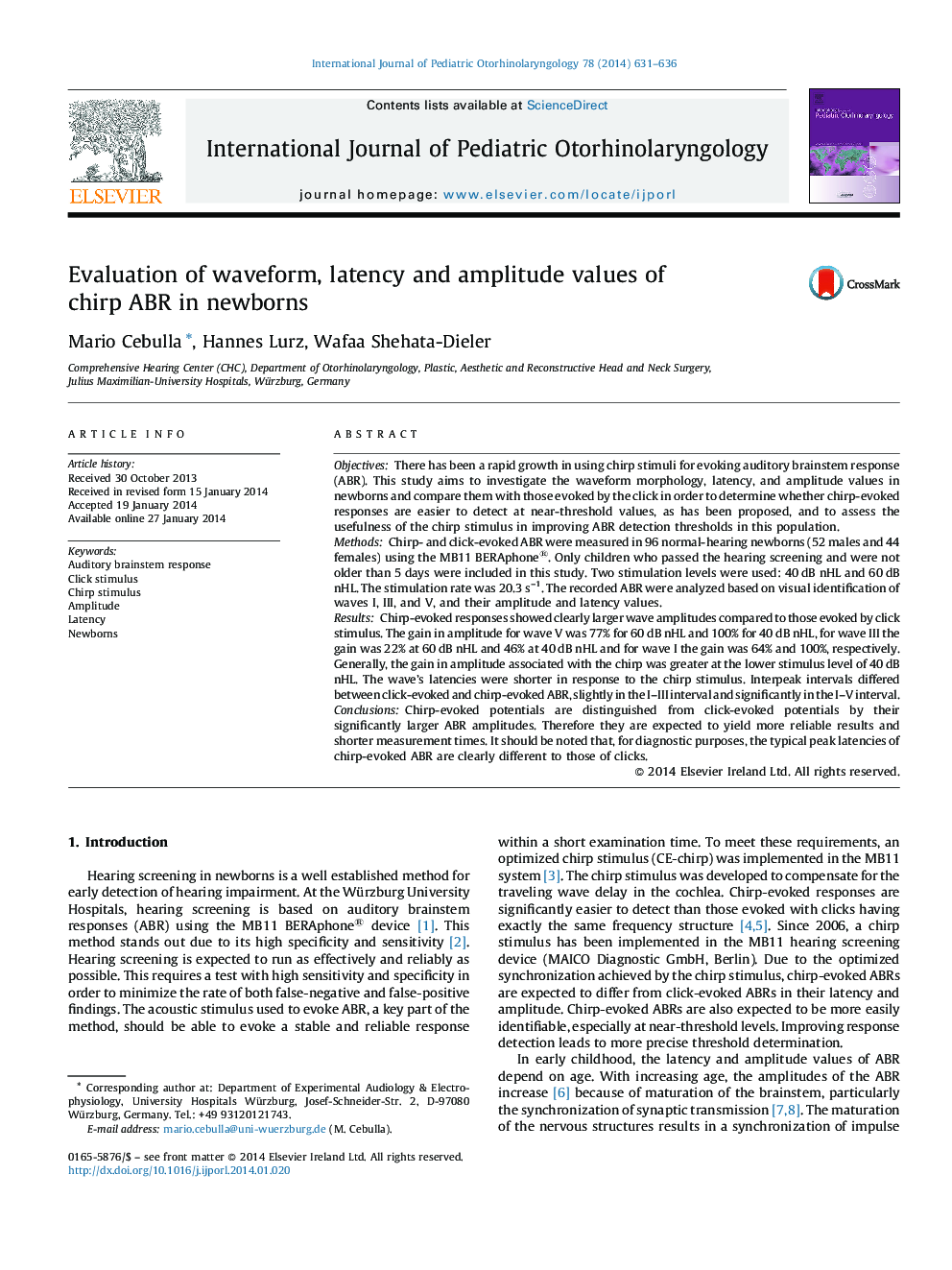| Article ID | Journal | Published Year | Pages | File Type |
|---|---|---|---|---|
| 6213597 | International Journal of Pediatric Otorhinolaryngology | 2014 | 6 Pages |
ObjectivesThere has been a rapid growth in using chirp stimuli for evoking auditory brainstem response (ABR). This study aims to investigate the waveform morphology, latency, and amplitude values in newborns and compare them with those evoked by the click in order to determine whether chirp-evoked responses are easier to detect at near-threshold values, as has been proposed, and to assess the usefulness of the chirp stimulus in improving ABR detection thresholds in this population.MethodsChirp- and click-evoked ABR were measured in 96 normal-hearing newborns (52 males and 44 females) using the MB11 BERAphone®. Only children who passed the hearing screening and were not older than 5 days were included in this study. Two stimulation levels were used: 40Â dB nHL and 60Â dB nHL. The stimulation rate was 20.3Â s-1. The recorded ABR were analyzed based on visual identification of waves I, III, and V, and their amplitude and latency values.ResultsChirp-evoked responses showed clearly larger wave amplitudes compared to those evoked by click stimulus. The gain in amplitude for wave V was 77% for 60Â dB nHL and 100% for 40Â dB nHL, for wave III the gain was 22% at 60Â dB nHL and 46% at 40Â dB nHL and for wave I the gain was 64% and 100%, respectively. Generally, the gain in amplitude associated with the chirp was greater at the lower stimulus level of 40Â dB nHL. The wave's latencies were shorter in response to the chirp stimulus. Interpeak intervals differed between click-evoked and chirp-evoked ABR, slightly in the I-III interval and significantly in the I-V interval.ConclusionsChirp-evoked potentials are distinguished from click-evoked potentials by their significantly larger ABR amplitudes. Therefore they are expected to yield more reliable results and shorter measurement times. It should be noted that, for diagnostic purposes, the typical peak latencies of chirp-evoked ABR are clearly different to those of clicks.
